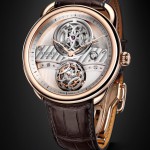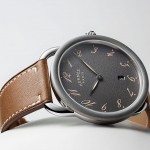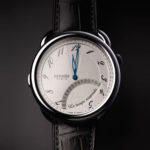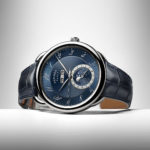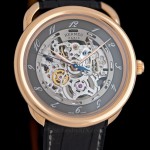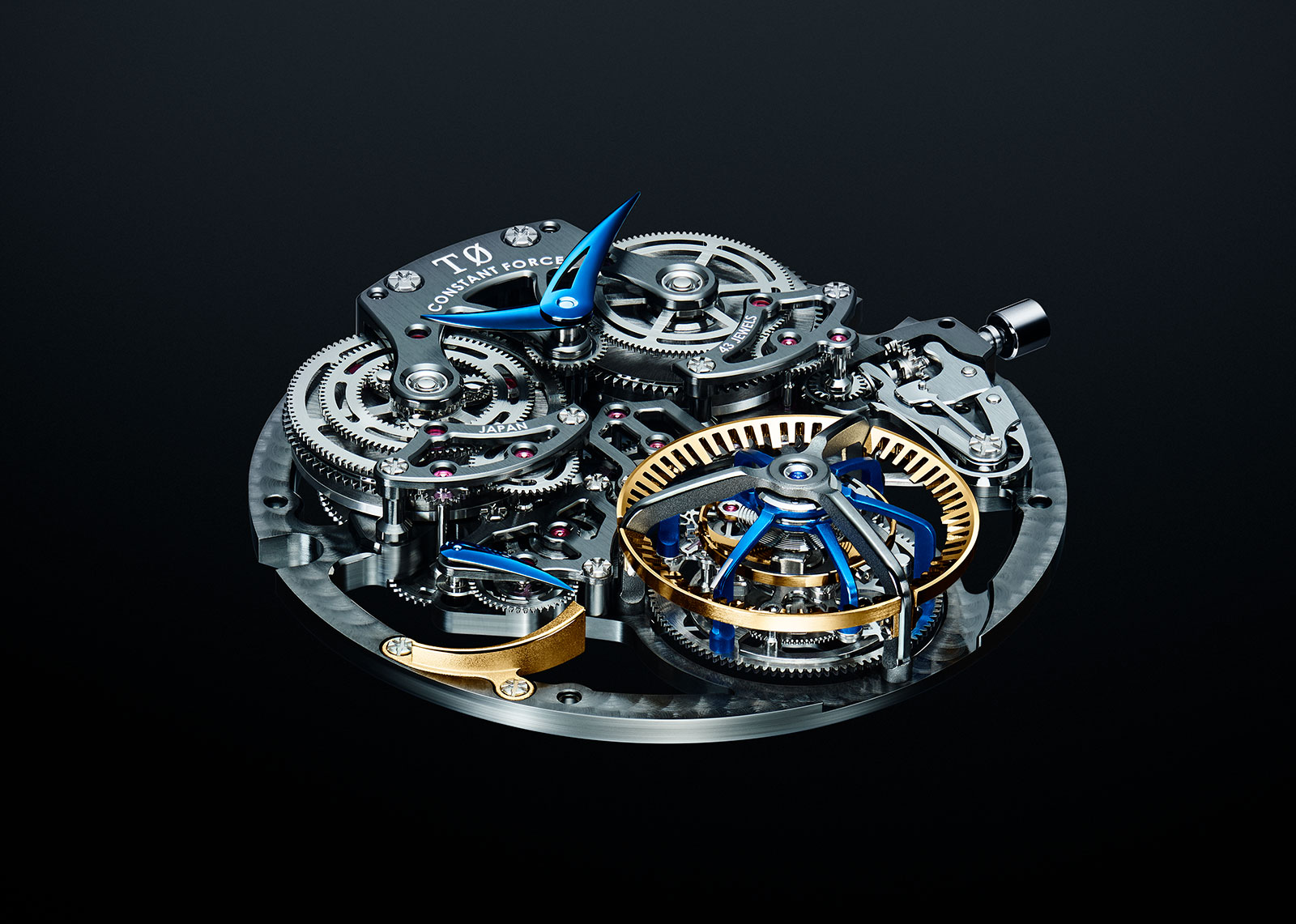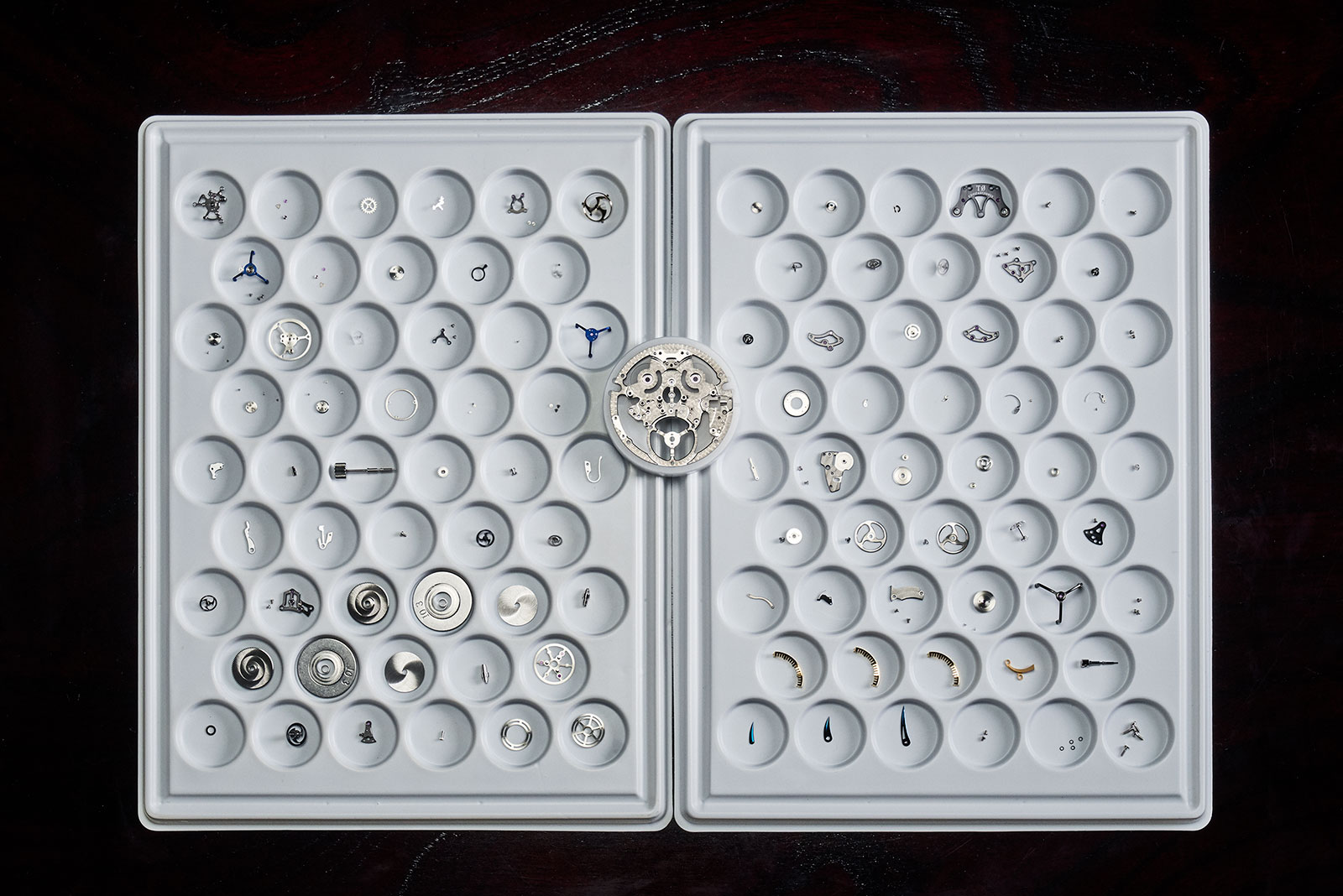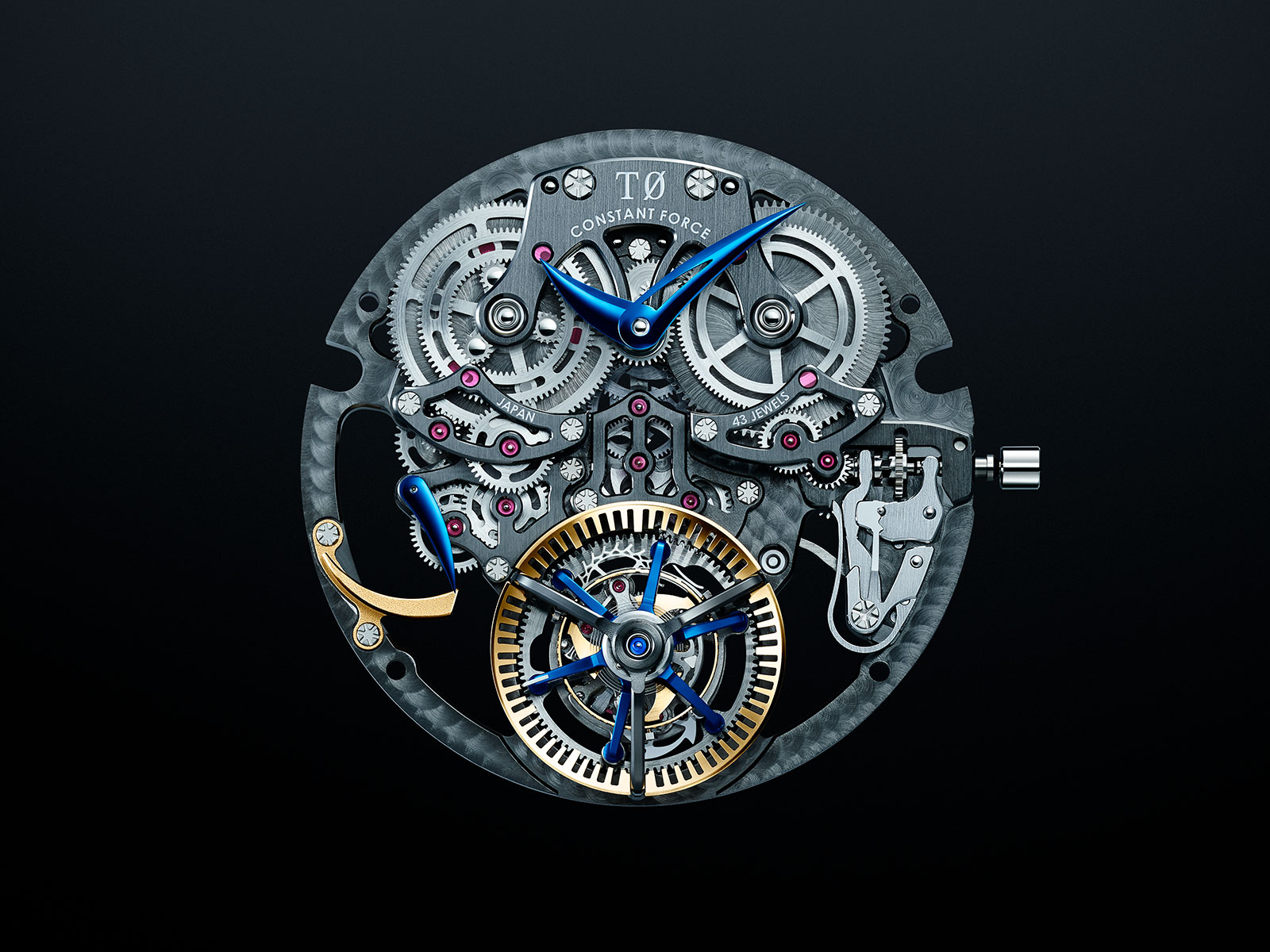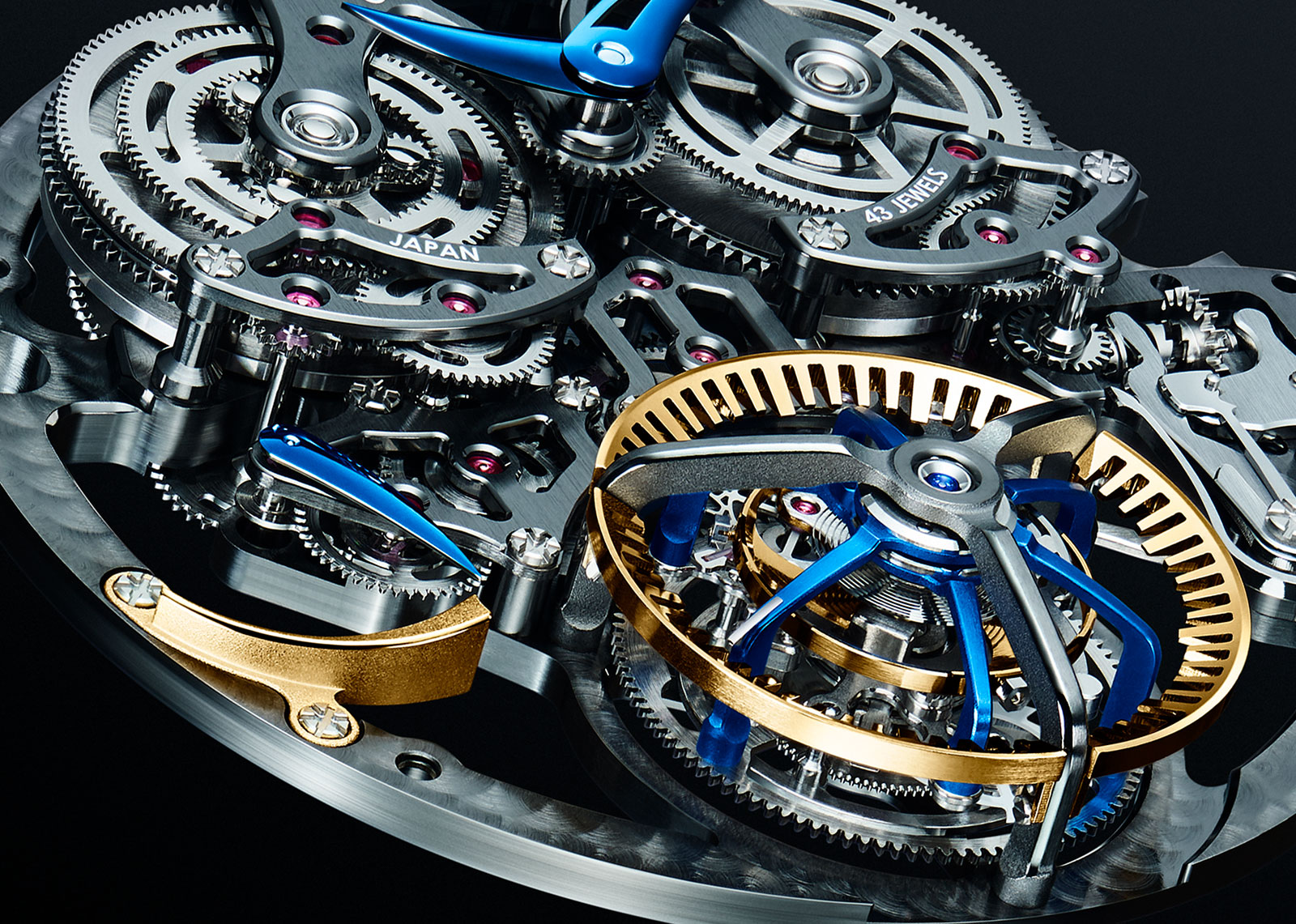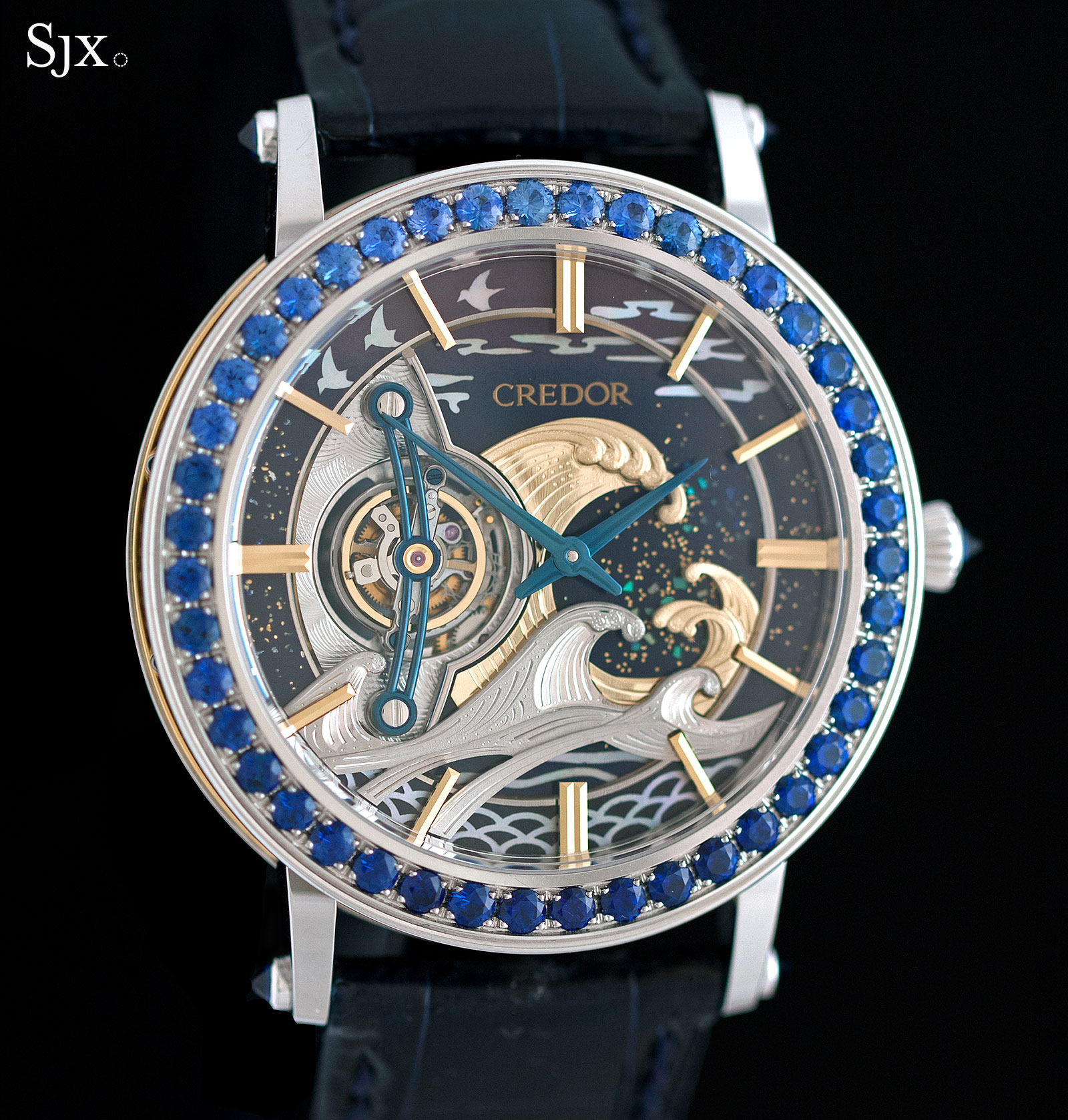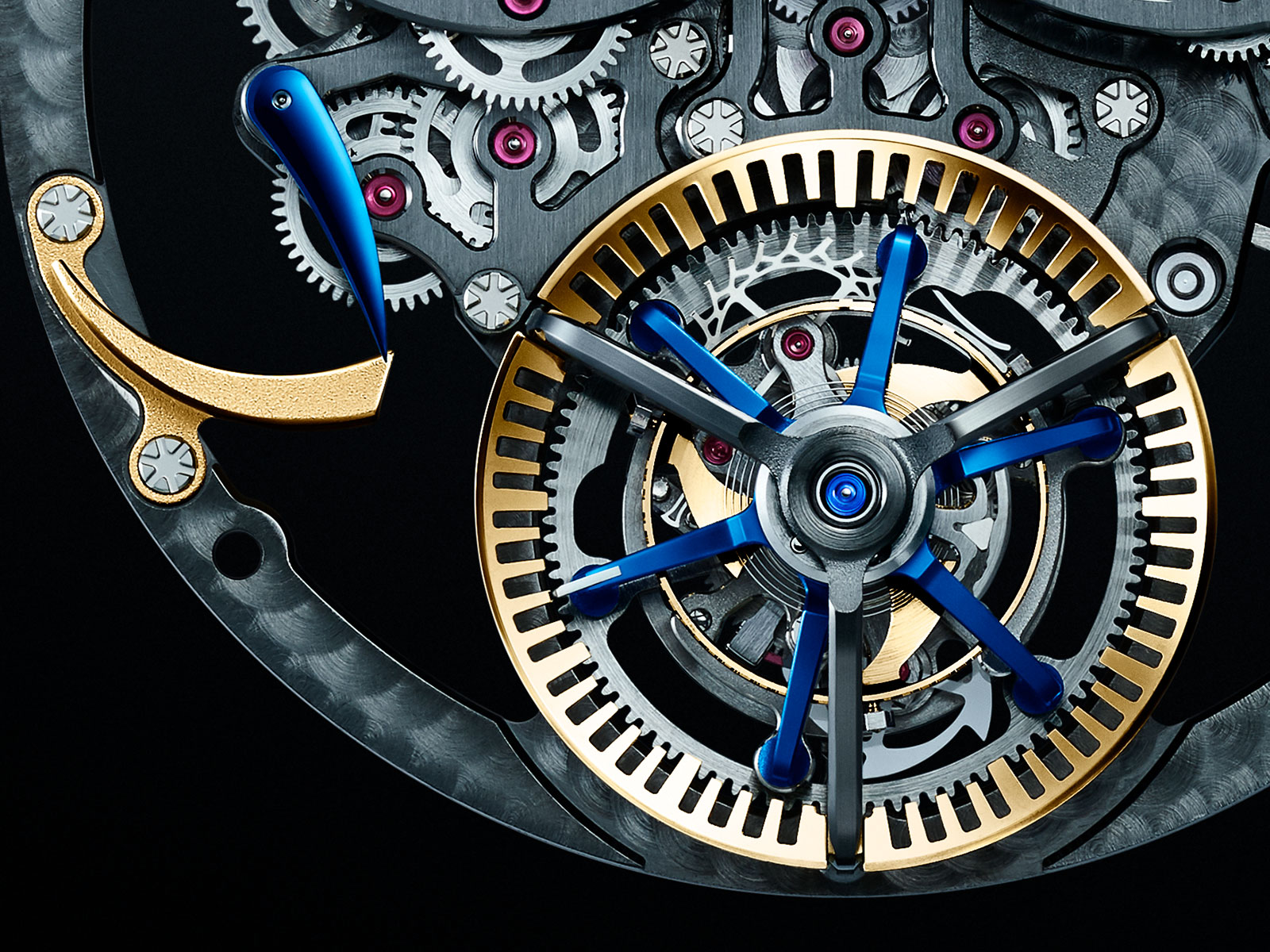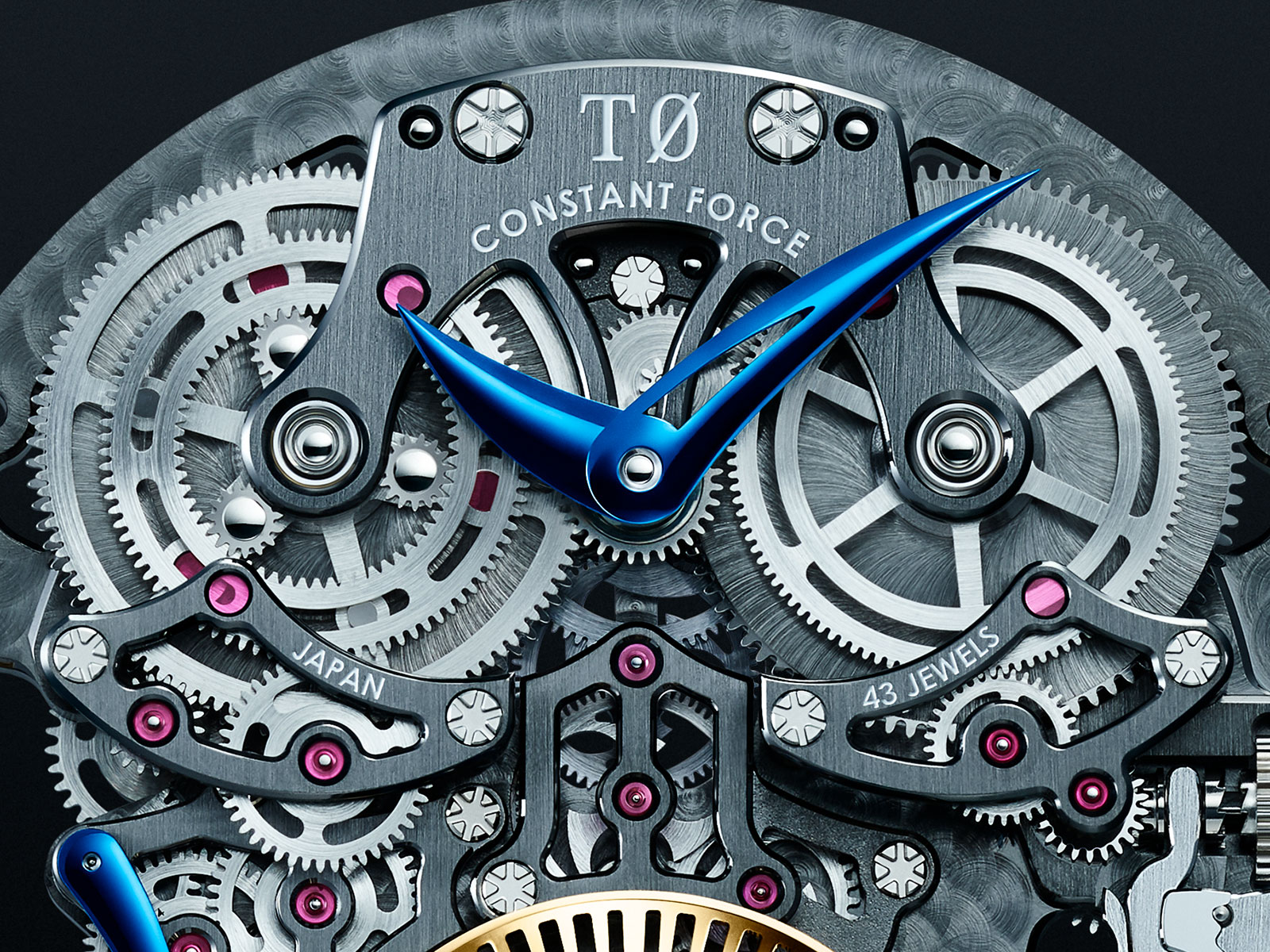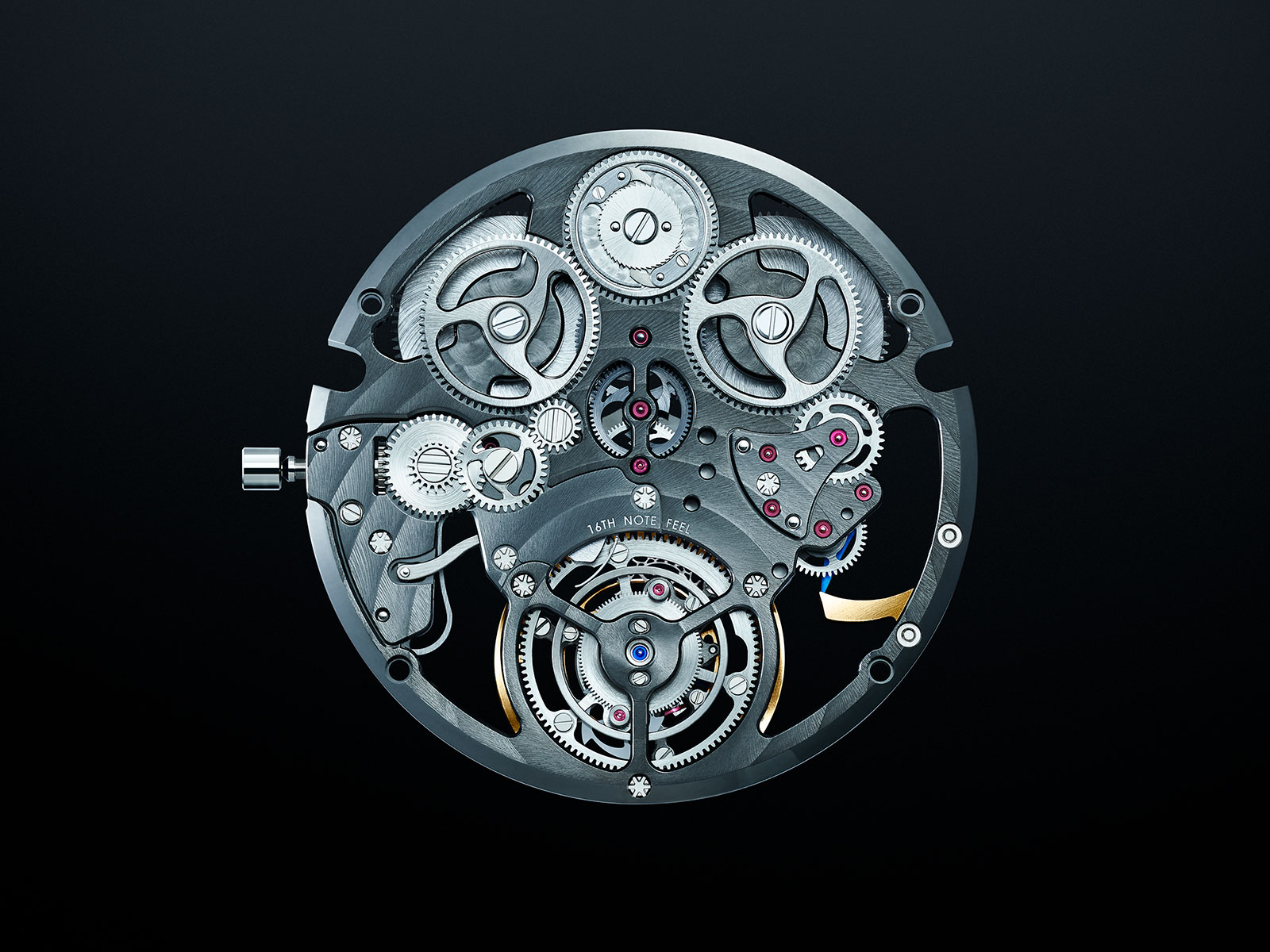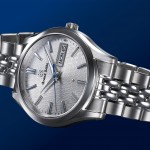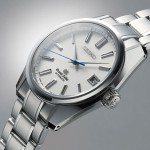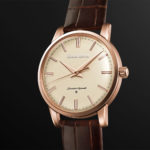Hermès Introduces the Arceau Lift Tourbillon Répétition Minutes
A one-off repeater in "H" style.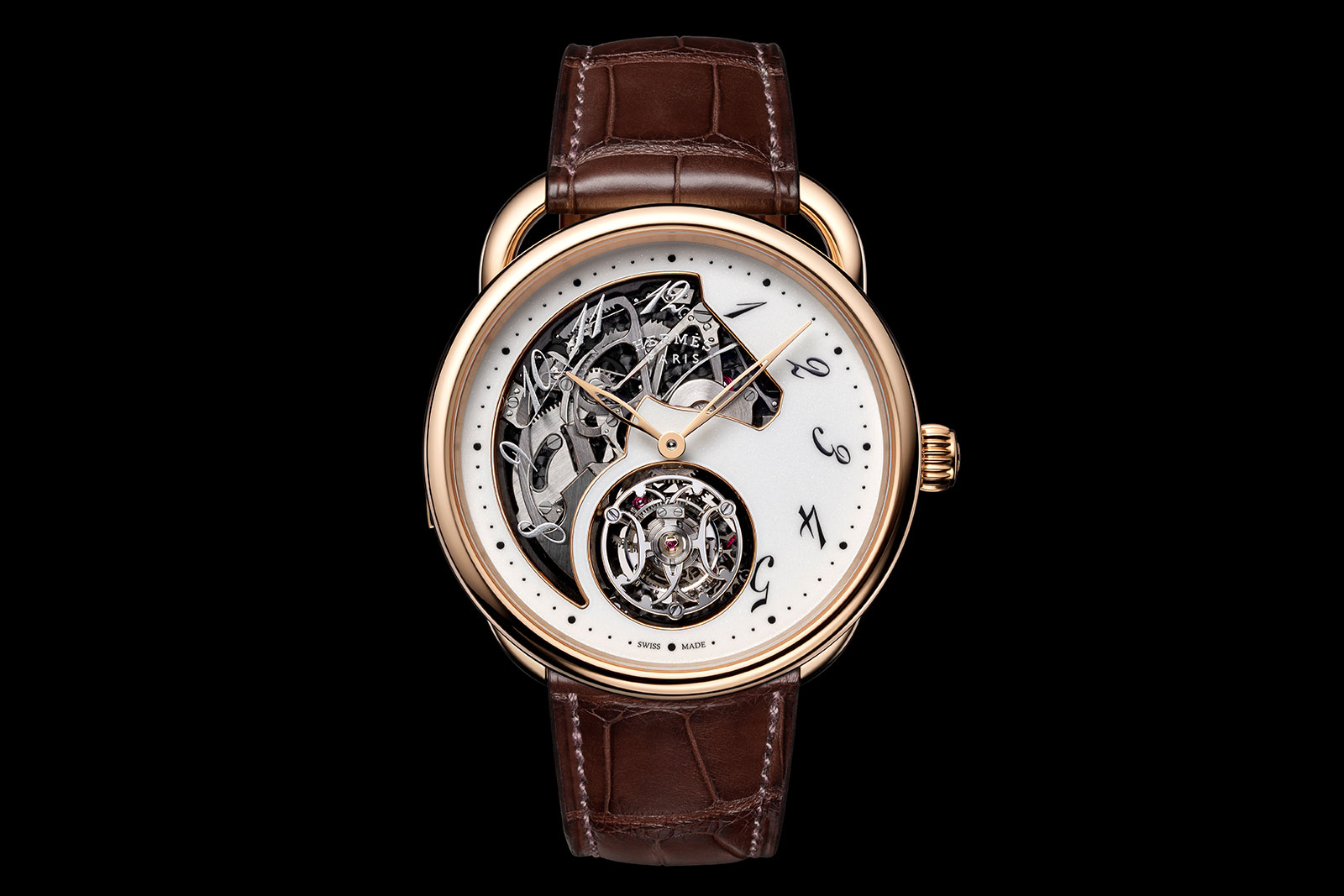
Hermès introduced its first tourbillon, the Arceau Lift, in 2013, an early indication of the leather goods maker’s ambitions in technically-oriented watchmaking. The intertwined, double “H” tourbillon cage was modelled the wrought-iron door of the elevator in the Hermes’ fabled store in Paris at 24, Rue du Faubourg Saint-Honoré, hence the name.
Seven years later, the Arceau Lift has been upgraded to incorporate a minute repeater. The Arceau Lift Tourbillon Répétition Minutes is being produced in just two examples – each unique – in pink and white gold respectively.
Initial thoughts
While combining two “high” complications is impressive, the whimsical house style of Hermes is what stands out at first glance. Elements like the asymmetric watch case and open dial are simple quite quickly identifiable as Hermes.
More subtle is the dial, which is surprisingly discreet until you spot it. It’s cleverly designed to incorporate the brand’s familiar horse-head motif that takes the form of a cut-out that serves to show off the racks and snail cams of the minute repeating mechanism.
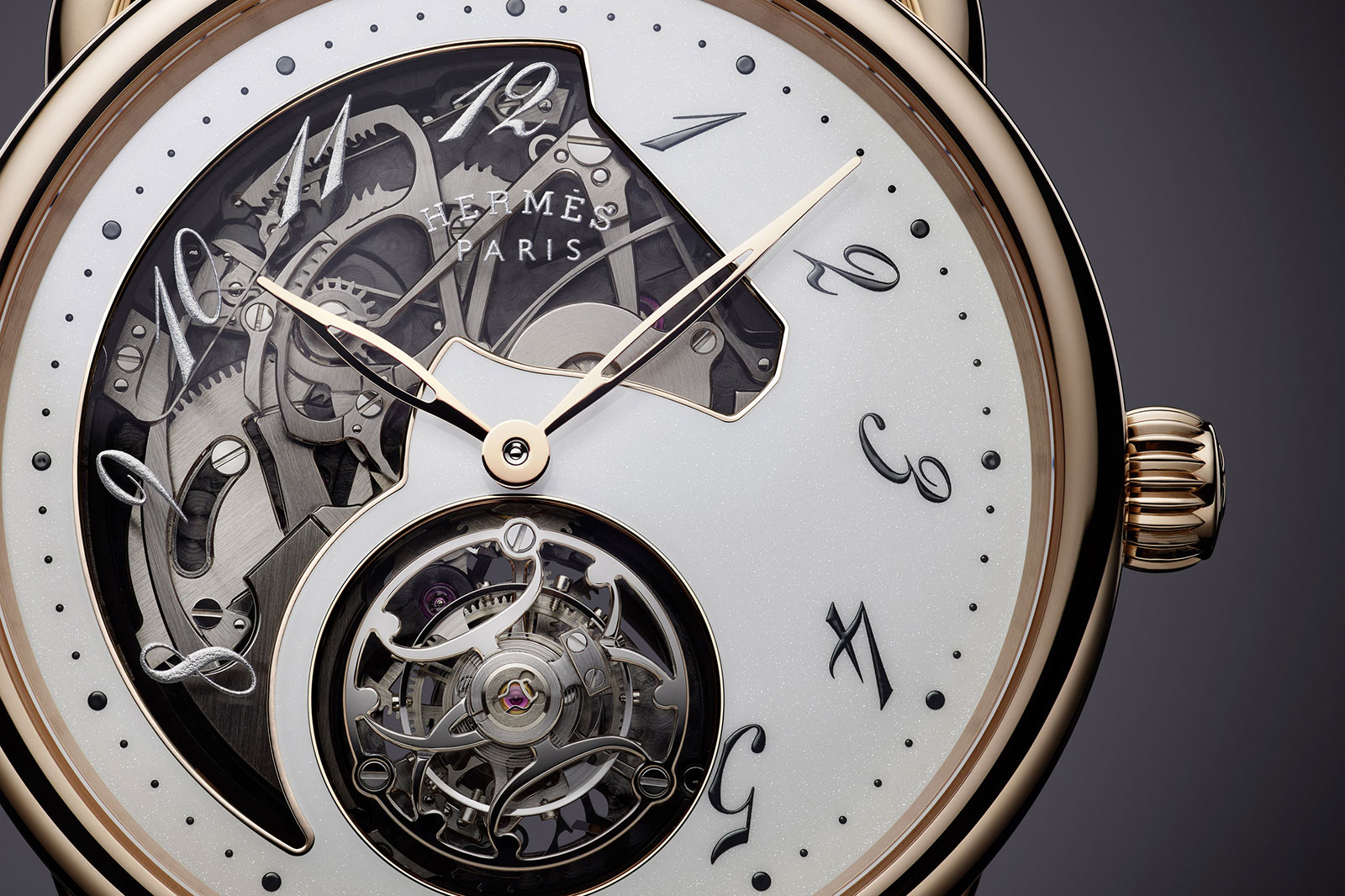
The H1924 movement within is high quality in both finish and construction, and also incorporates the equestrian theme with a barrel bridge shaped like twin horse heads. But it is produced by Manufacture Haute Complications (MHC), a respected but struggling Geneva-based movement specialist that has supplied the same calibre to H. Moser & Cie., Dolce & Gabbana, and Artya. So while the movement is an excellent one, it isn’t particularly uncommon or interesting.
At the same time, because MHC was founded by Pierre Favre, an alumnus of defunct complications specialist BNB Concept, its movement is similar to the minute repeating calibre produced by La Fabrique du Temps (LFDT), the subsidiary of Louis Vuitton run by the talented Michel Navas and Enrico Barbasini, who were the “N” and “B” in BNB. Because of the shared history and other assorted events, the MHC and LFDT movements are extremely similar.
And last is a minor quibble: the dial is lacquered rather than fired enamel, which would have been a small but significant extra.
At around US$270,000, the Arceau repeater is priced comparably to other watches with the same movement, so it’s a fair deal from that perspective. That said, its value proposition is probably not a concern for the eventual owner, since it is a one-off creation from Hermes. For the brand’s devotees, the twin complications combined with the quintessential Hermes style is probably a winner.
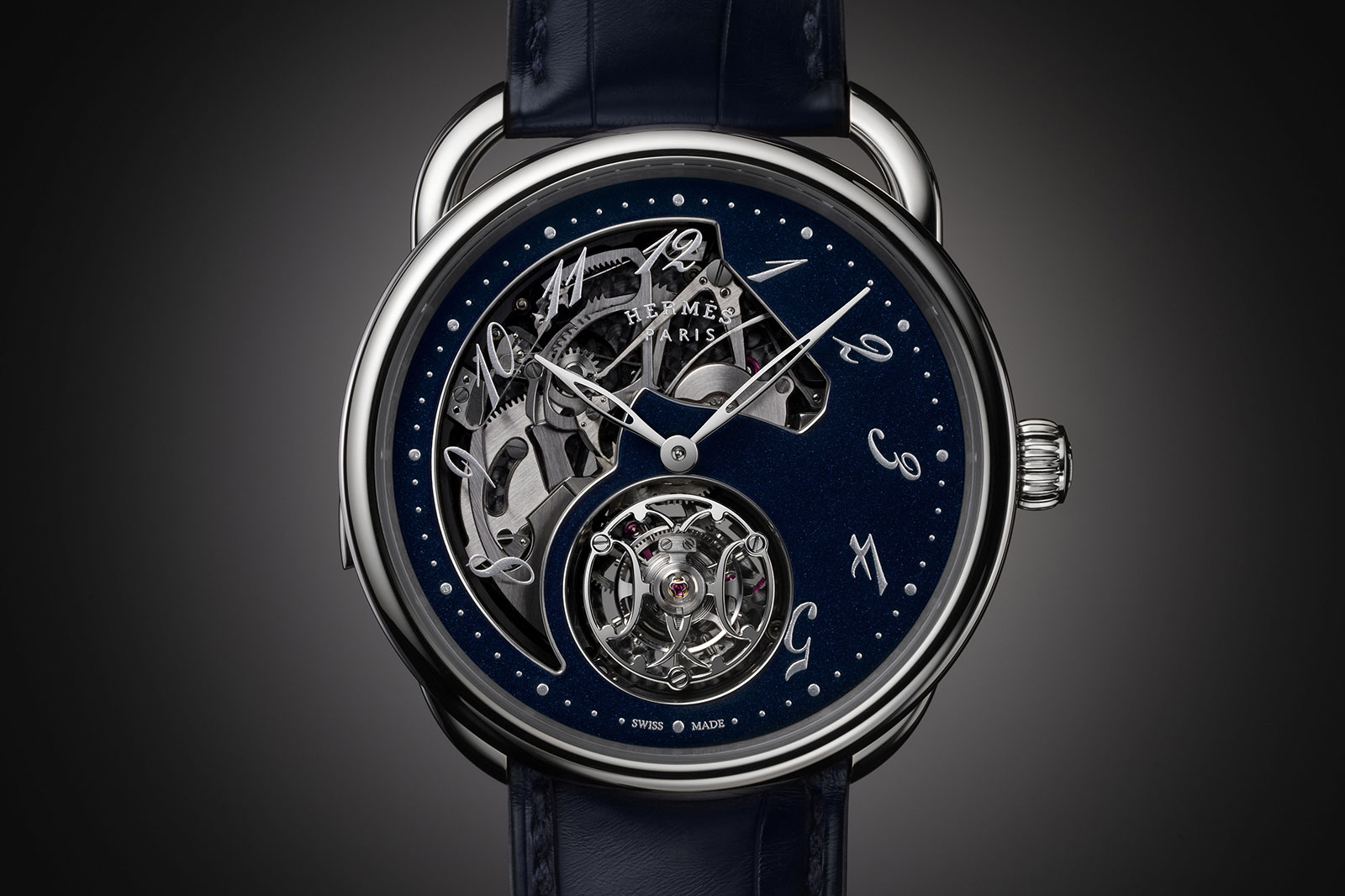
A closer look
The success of the dial lies in its contrasts. However captivating, a complicated mechanical look can be cold or distract from legibility. Luckily, the exposed mechanics on the dial are balanced with elegant Breguet numerals.
On the back, there is again visual contrast, albeit of a different sort. The movement is well finished; the double-H tourbillon carriage, for instance, is black polished and has chamfered edges.
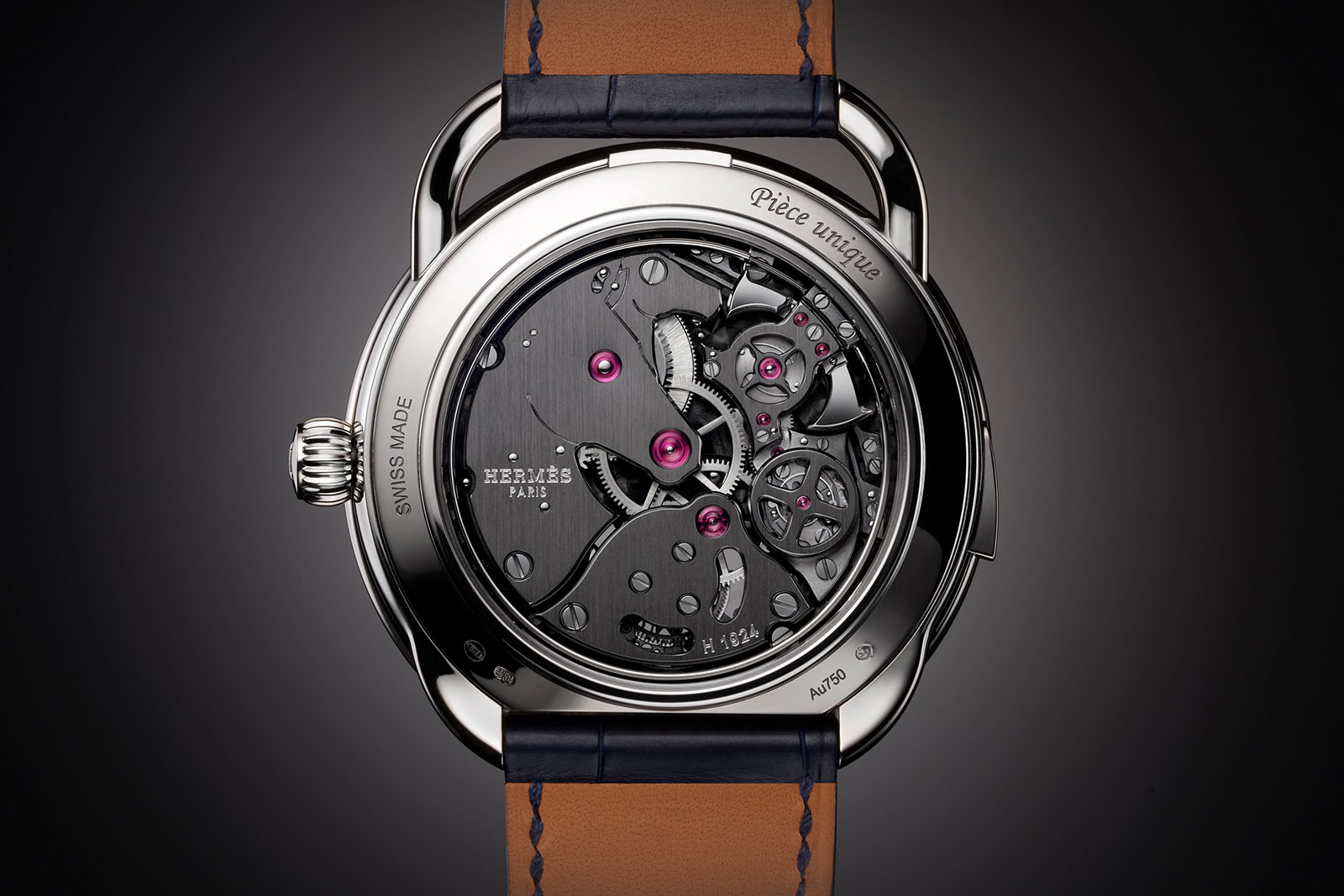
On the back, the look is restrained, with the bridges plated with dark rhodium and vertically brushed, but enhanced with polished, bevelled edges. The of the repeater are hammers are black polished and bevelled.
That said, the movement does lack the finer touches of high-end finishing. The inner angles on the edges of the bridges are less well defined, and the countersinks for the screws and jewels are not sloped and polished.
Key facts and price
Hermes Arceau Lift Tourbillon Répétition Minutes
Diameter: 43 mm
Height: Unavailable
Material: Rose or white gold
Water resistance: 30 m
Movement: H1924
Features: Hours, minutes, tourbillon, and minute repeater
Winding: Hand-wind
Frequency: 21,600 beats per hour (3 Hz)
Power reserve: 90 hours
Strap: Alligator
Limited edition: Each a piece unique in rose and white gold respectively
Availability: Upon request at Hermes boutiques
Price:
US$269,000 (rose gold)
US$282,000 (white gold)
For more, visit hermes.com
Correction September 6, 2020: The movement is produced by Manufacture Haute Complication (MHC), and not La Fabrique du Temps (LFDT) as stated in an earlier version of the article.
Back to top.
